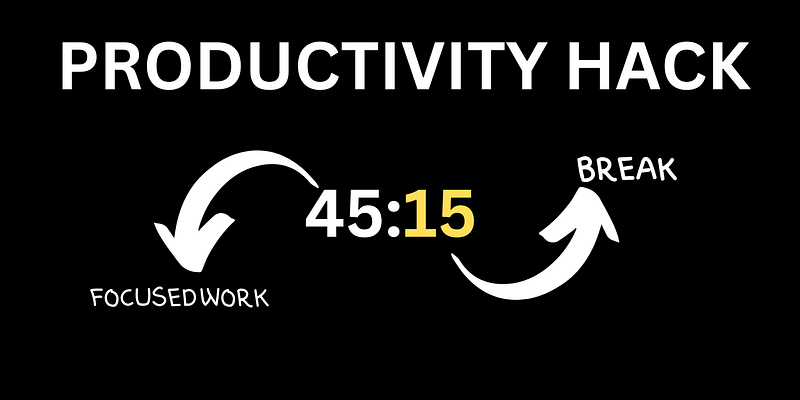
The 45:15 rule, an innovative approach to enhancing productivity and focus, has gained significant popularity in both academic and professional circles. Rooted in the principles of time management and cognitive science, this strategy addresses the common challenges of burnout, inefficiency, and procrastination.
At its core, the 45:15 rule is a time management technique that suggests dividing work into focused intervals of 45 minutes, followed by a 15-minute break. This method aligns with the natural attention spans and cognitive rhythms of most individuals, optimising the balance between intense focus and necessary rest.
The first segment, the 45-minute work period, is designed to capitalise on the peak concentration levels. During this phase, individuals are encouraged to work on a single task without distractions. This uninterrupted focus enables deeper engagement with the task, fostering creativity and efficiency. By limiting the work period to 45 minutes, the rule helps in maintaining a high level of productivity throughout, as cognitive fatigue typically begins to set in after this duration.
Following the intense work phase is a 15-minute break. This short respite serves multiple purposes. Firstly, it allows the brain to rest, process information, and rejuvenate, which is crucial for maintaining a high level of performance throughout the day. Secondly, these breaks can be used for light physical activities, such as stretching or a brief walk, which help in reducing physical strain and mental stress. Additionally, this period can be utilised for personal tasks, thus integrating work-life balance into the daily routine.
The 45:15 rule also has psychological benefits. The structured nature of the technique reduces the anxiety associated with large, overwhelming tasks. By breaking work into manageable intervals, it makes goals seem more attainable, thereby boosting motivation and satisfaction.
Moreover, the rule is highly adaptable. It can be customised according to individual preferences and the nature of the task at hand. For instance, creative tasks might require longer periods of uninterrupted work, while highly analytical tasks might benefit from more frequent breaks.
In conclusion, the 45:15 rule presents a balanced approach to managing work and rest, maximising productivity without sacrificing well-being. Its simplicity and adaptability make it a versatile tool for anyone looking to enhance their work efficiency and maintain a healthy work-life balance. As the world moves towards more dynamic and demanding work environments, such methods of time management become increasingly relevant, offering a practical solution to the age-old challenge of achieving more with less.






![Read more about the article [Weekly Funding Roundup Dec 25-31] Strong ending for 2021 raises expectations for 2022](https://blog.digitalsevaa.com/wp-content/uploads/2021/12/weekly-funding-roundup-1640354161359-300x150.png)

![Read more about the article [Funding alert] Blockchain startup Instadapp raises $10M led by Standard Crypto](https://blog.digitalsevaa.com/wp-content/uploads/2021/05/Funding-1587044486257-300x150.png)

